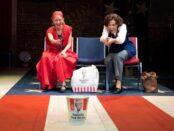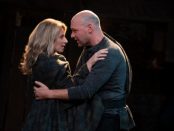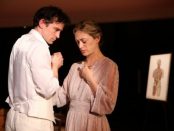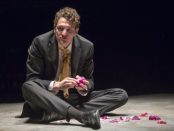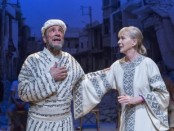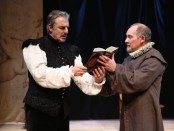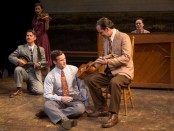Assassins
As always in a John Doyle presentation, the production is professional, polished and accomplished. This time around he has not made changes to the script or the score except to include the climactic song “Something Just Broke” which was not in the original Off Broadway production but was added to the first London version in 1992 and has been used ever since. While the actors give excellent performances, the revival lacks emotion and heart which is strange considering the number of characters who die or who are wounded in the course of the show. It is as though they (and we) are numbed by much depiction of killing. Is there a way to fix this in a show which repeatedly has its cast shooting at presidents of the United States, in this case only in a fun house setting? [more]

